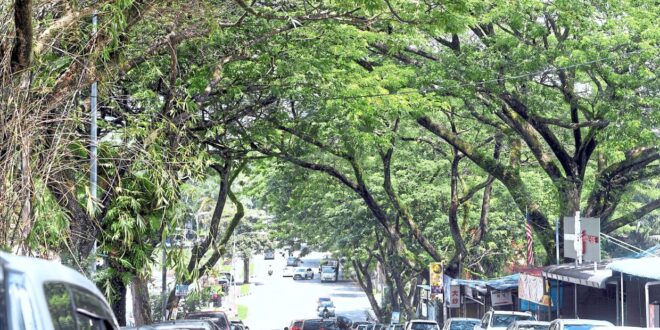THE government has been advised to establish a native tree bank as a strategic step to mitigate climate change and provide a sustainable solution to the issue of fallen trees.
Institute of Landscape Architects Malaysia (ILAM) president Associate Professor Dr Nor Atiah Ismail said the speciality of local trees lay in its resilience, adaptation to weather, quality of flora and fauna and environmental ecology, which could reduce the risk of fallen trees threatening public safety and property damage.
“With a tree bank, (if) any untoward incident occurs, tree replacement can be done and solve the issue of high-risk trees in Kuala Lumpur.
“So, we need native trees and preferably the species come from our own forests.
“The use of internal trees (species native to country) is (however) insufficient because healthy and beautiful trees have been exported to Singapore while we receive trees that are said to be cheap.
“For example, the (smallish) bucida tree is not suitable for our ecology because of the aggressive nature of their roots,” she said as a guest on the ‘Reaksi’ programme on BK Radio.
In dealing with the issue of fallen trees especially around the capital, she said Kuala Lumpur City Hall (DBKL) needed to take decisive action by visually inspecting trees to identify their condition and health.
“In Kuala Lumpur, trees are located between tall buildings. When the wind is strong, the buildings create a wind tunnel causing trees to fall, especially if they are old and the roots have decayed,” she added.
Assoc Prof Nor Atiah said visual inspections could note problems such as excessive fallen leaves, yellowing, broken twigs or branches, cracked trees or liquid oozing out of the roots.
Then a decision would be made on whether the tree needed to be treated or cut down.
“We should actually have a database of which areas need replacement, mitigation and we ought to be constantly inspecting and analysing,” she said, insisting that every tree cut down needed to be replaced to ensure ecological balance.
Assoc Prof Nor Atiah also expressed her dismay that Kuala Lumpur only had 10% greenery, which was insufficient compared to Putrajaya’s 30% to 40% foliage.
“With a higher capacity of people (high density) and high-rise buildings, that amount (10% trees) is not enough.
“As this city is full of buildings, we have to look at pocket spaces that can be used as lush, green lungs.”
Assoc Prof Nor Atiah said policy involvement from the government was a good thing and must be done so that the environment and tree cover were in good condition and resilient.
On May 15, Prime Minister Datuk Seri Anwar Ibrahim had ordered DBKL to plant 100 new trees to replace every tree cut down.
 BeritaKini.biz Berita Viral Terkini di Malaysia
BeritaKini.biz Berita Viral Terkini di Malaysia





